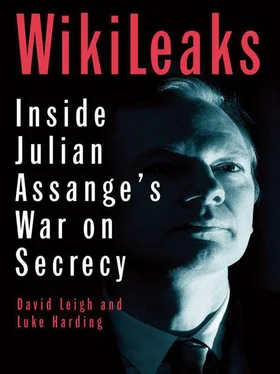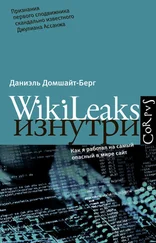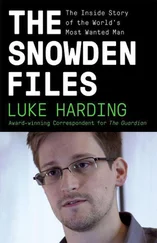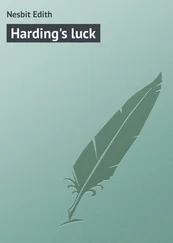Harding, Luke - WikiLeaks - Inside Julian Assange's War on Secrecy
Здесь есть возможность читать онлайн «Harding, Luke - WikiLeaks - Inside Julian Assange's War on Secrecy» весь текст электронной книги совершенно бесплатно (целиком полную версию без сокращений). В некоторых случаях можно слушать аудио, скачать через торрент в формате fb2 и присутствует краткое содержание. Жанр: Старинная литература, на английском языке. Описание произведения, (предисловие) а так же отзывы посетителей доступны на портале библиотеки ЛибКат.
- Название:WikiLeaks: Inside Julian Assange's War on Secrecy
- Автор:
- Жанр:
- Год:неизвестен
- ISBN:нет данных
- Рейтинг книги:3 / 5. Голосов: 1
-
Избранное:Добавить в избранное
- Отзывы:
-
Ваша оценка:
- 60
- 1
- 2
- 3
- 4
- 5
WikiLeaks: Inside Julian Assange's War on Secrecy: краткое содержание, описание и аннотация
Предлагаем к чтению аннотацию, описание, краткое содержание или предисловие (зависит от того, что написал сам автор книги «WikiLeaks: Inside Julian Assange's War on Secrecy»). Если вы не нашли необходимую информацию о книге — напишите в комментариях, мы постараемся отыскать её.
WikiLeaks: Inside Julian Assange's War on Secrecy — читать онлайн бесплатно полную книгу (весь текст) целиком
Ниже представлен текст книги, разбитый по страницам. Система сохранения места последней прочитанной страницы, позволяет с удобством читать онлайн бесплатно книгу «WikiLeaks: Inside Julian Assange's War on Secrecy», без необходимости каждый раз заново искать на чём Вы остановились. Поставьте закладку, и сможете в любой момент перейти на страницу, на которой закончили чтение.
Интервал:
Закладка:
Assange himself subsequently maintained that he had only a “brief interaction” with Shamir: “WikiLeaks works with hundreds of journalists from different regions of the world. All are required to sign non-disclosure agreements and are generally only given limited review access to material relating to their region.”
One can only speculate about whose interests Shamir was serving by his various wild publications. Perhaps his own personal interests were always to the fore. But while the newspapers had hammered out a deal to handle the cables in a responsible fashion, Shamir’s backstairs antics certainly made WikiLeaks look rather less so.
CHAPTER 14
Before the deluge
El País newspaper, Calle de Miguel Yuste, Madrid
14 November 2010
“ It was a fruit machine. You just had to hold your hat under there for long enough ”
ALAN RUSBRIDGER, THE GUARDIAN
Viewed on screen, the unkempt, silhouetted figures looked like hostages held in the basement of a terrorist group’s safehouse. One of the stubbly, subterranean figures moved closer to the camera. He held up a sheet of paper. Written on it was a mysterious six-digit number. A secret Swiss bank account, perhaps? A telephone number? Something to do with The Da Vinci Code ?
The shadowy figures had not, in fact, been seized by some radical faction, but were a group of journalists from Spain’s El País newspaper. Nor was their note a ransom demand. It was the index reference of one of more than 250,000 cables. Since being invited to join the existing British-US-German consortium – or “tripartite alliance” as the New York Times ’s Bill Keller dubbed it – El País had wasted no time in setting up its own underground research room.
The paper – and France’s Le Monde – had joined the WikiLeaks party late. They had only two weeks to go through the cables before the D-day publication night. The Guardian had been in the luxurious position of having held the same material for several months. El País ’s editor-in-chief, Javier Moreno, and executive Vicente Jiménez urgently summoned back to Madrid their foreign correspondents; sitting in the paper’s bunker, next to endless discarded coffee cups, they ploughed through the database.
The journalists may have been heartened to read that, according to a secret cable from US officials in Madrid dated 12 May 2008, El País was Spain’s “newspaper of record”. It was also, apparently, “normally pro-government”. But they also found sensational material: the US embassy in Madrid had tried to influence judges, the government and prosecutors in cases involving US citizens. One involved a detainee at Guantánamo Bay, another covered secret rendition flights in Spain, and another was about the murder of a Spanish journalist by US fire in Baghdad. They also discovered stories from all across Latin America: from Mexico, Argentina, Colombia and Venezuela.
From the beginning, the papers had agreed to work collaboratively. They shared some discoveries from the cables and even circulated lists of possible stories. Assange later claimed in a Swedish TV documentary that it was he personally who was pulling the strings of the old-fashioned MSM. He said: “What is new is us enforcing co-operation between competitive organisations that would otherwise be rivals – to do the best by the story as opposed to simply doing the best by their own organisations.”
In reality, this was a co-operative technique that the Guardian , along with other international outlets, had long been building. The previous year, for example, the paper had successfully beaten off lawyers for the Trafigura company, who had dumped toxic waste, by working in concert with BBC TV’s Newsnight , with a Dutch paper, Volkskrant , and with the Norwegian TV channel NRK. The British arms giant BAE had also been brought to a $400m corruption settlement with the US department of justice, following a campaign in which the Guardian co-operated with other TV and print media in countries from Sweden to Romania to Tanzania.
The most distinguished pioneer of this globalised form of investigation was probably Charles Lewis, founder of the Center for Public Integrity in Washington DC, who, a full decade earlier, organised a massive exposure of the British American Tobacco company’s collusion in cigarette smuggling, with simultaneous publication by media in Colombia, London and the US.
So the present five-way media consortium was not a new invention. It was – or would be if it actually worked – the culmination of a growing media trend. What made this trend possible was what also made it necessary: the technological growth of massive, near-instantaneous global communications. If media groups did not learn to work across borders on stories, the stories would leave them behind.
In the run-up to cable D-Day, Ian Katz, the deputy editor managing these complex relationships, held regular Skype chats with the Guardian ’s multilingual counterparts. “They were hilarious conversations,” Katz recalls. The reason the Spaniards were holding up the number of a US state department cable to the Skype camera was security – it had been agreed that no sensitive mentions would be made over the phone or by email.
In Berlin, similarly, Marcel Rosenbach, from Der Spiegel , was the first to unearth a cable with the deceptively bland title: “National HUMINT Collection Directive on the United Nations.” In fact, it revealed the US state department (on behalf of the CIA) had ordered its diplomats to spy on senior UN officials and collect their “detailed biometric information”. They were also told to go after “credit card account numbers; frequent flyer account numbers; work schedules and other relevant biographical information”. The cable, number 219058, was geopolitical dynamite. Nobody else had spotted it. “Marcel had written down the number. I could only see half of it. I had to tell him: ‘Left a bit, left a bit,’” Katz recalls.
For Julian Assange – like Jason Bourne, the Hollywood secret agent constantly on the run from the CIA – elaborate security precautions may have been second nature. But for journalists used to spilling secrets down at the pub after a gossipy pint or two they were a new and tricky-to-master art form. Katz and Rusbridger borrowed inspiration from The Wire , the cult US drama series set amid the high rises and drug dealers of Baltimore. The noir show was popular among some of the Guardian ’s staff; in it, the dealers typically relied on “burners”, or pay-as-you-go phones, to outsmart the cops.
Katz therefore asked his assistant to go out and buy 20 burner phones for key members of the cables team. The Guardian now had its own leak-proof network. Unfortunately, nobody could remember their burner number. At one point Alan Rusbridger sent a text from his “burner” to Katz’s regular cellphone – an elementary error that in The Wire would almost certainly have prompted the cops to swoop. The Guardian editor picked up another burner during a five-day trip to Australia. When he got back to London Katz called him on that number. The conversation – routed right round the world – fizzled out after just three minutes when Katz ran out of credit. “We were basically completely useless at any of the spooky stuff,” Katz confesses.
Like El País , the Guardian had deployed a team of experts and foreign correspondents for a thorough final sift through the cables. Some – such as the Guardian ’s Moscow correspondent Luke Harding – were physically recalled to London for security reasons. Other foreign staff accessed the cables remotely via a VPN (virtual private network) connection. Ian Traynor in Brussels examined cables referring to the European Union, Nato and the Balkans; Declan Walsh, the Guardian ’s correspondent in Islamabad, looked at Afghanistan and Pakistan; David Smith did Africa and Jason Burke took on India.
Читать дальшеИнтервал:
Закладка:
Похожие книги на «WikiLeaks: Inside Julian Assange's War on Secrecy»
Представляем Вашему вниманию похожие книги на «WikiLeaks: Inside Julian Assange's War on Secrecy» списком для выбора. Мы отобрали схожую по названию и смыслу литературу в надежде предоставить читателям больше вариантов отыскать новые, интересные, ещё непрочитанные произведения.
Обсуждение, отзывы о книге «WikiLeaks: Inside Julian Assange's War on Secrecy» и просто собственные мнения читателей. Оставьте ваши комментарии, напишите, что Вы думаете о произведении, его смысле или главных героях. Укажите что конкретно понравилось, а что нет, и почему Вы так считаете.












